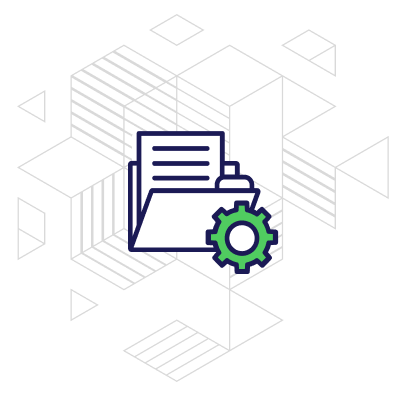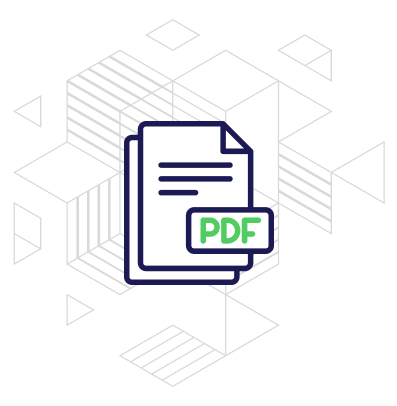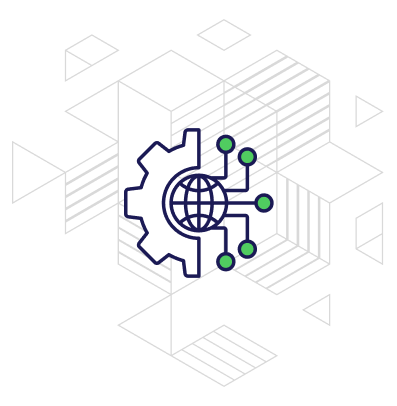

Greetings, esteemed document enthusiasts and fellow adventurers in the realm of paperwork! Have you ever wondered how we went from being trapped in a storm of paperwork to effortlessly gliding the digital breeze? Well fret not, friends. Today we embark on an enlightening journey through the annals of document history, tracing the evolutionary path of Intelligent Document Processing (IDP) from its humble beginnings to its lofty status as the unsung hero of the digital era.

“The Dark Ages Of Paperwork”
Before we delve into the evolution of IDP, it’s important that we understand the landscape that preceded it.
Picture this: A world before smartphones, tablets, and cloud storage. A world which was still mired in the labyrinth of paperwork that had to be manually handled. Businesses and organizations dealt with vast amounts of paperwork, ranging from invoices and forms to contracts and reports. Each document had to be manually reviewed, processed, and entered into relevant systems - a labour intensive, time consuming and error prone task where every smudge or typo threatened disaster, and documents amassed faster than the coffee machine could brew.
“Enter the OCR Crusaders”
Just when all hope seemed lost, a new technology emerged to vanquish the metaphorical paper dragon: Optical Character Recognition (OCR). The advent of OCR tech in the mid-20th century marked a significant leap forward in document processing. It enabled machines to "read" printed text and convert it into machine-readable text data. This capability revolutionized document digitization by automating the conversion of printed documents into electronic format.
All of a sudden, the dream of a paperless office didn't seem so far-fetched anymore. But like any hero, OCR had its weaknesses. It struggled with handwritten text, poor-quality prints, and formatting inconsistencies. Despite these challenges, OCR laid the foundation for more advanced document processing technologies to come.


“The Digital Renaissance”
As computing power increased and software algorithms improved, a wave of digitization swept across the land, turning paper mountains into pixel pebbles. Businesses embraced scanners, PDFs, and email attachments with the fervour of a medieval kingdom discovering gunpowder. Paper-based documents began to be digitized en-masse, leading to significant reductions in storage costs, improved document accessibility, and streamlined workflows. OCR technology played a crucial role in this transition, enabling organizations to convert vast archives of paper documents into searchable digital files. Suddenly ‘paperless’ wasn't just a buzzword—it was a liveable reality.
But as any seasoned traveller knows, the road to digitization was paved with potholes. While OCR addressed the need for text extraction, it still required human intervention for tasks like data validation, classification, and interpretation.
“The Champion Descends”
The limitations of traditional OCR became apparent as businesses sought more comprehensive solutions for document processing. Enter Intelligent Document Processing (IDP), a paradigm shift that combines OCR with artificial intelligence (AI) and machine learning (ML) capabilities.
IDP represents the convergence of multiple technologies, including OCR, natural language processing (NLP), and robotic process automation (RPA). Unlike traditional OCR, which focuses solely on text extraction, IDP solutions leverage AI and ML algorithms to interpret and understand the context of documents.

“What’s Under The Hood?”
OCR: Optical Character Recognition remains a fundamental component of IDP, enabling the extraction of text from scanned documents, images, and PDF files.
NLP: Natural Language Processing algorithms enable IDP systems to analyze and understand the meaning and context of textual data. This includes tasks such as entity recognition, sentiment analysis, and language translation.
ML: Machine Learning algorithms power the predictive capabilities of IDP systems, enabling them to learn from data patterns and make intelligent decisions without explicit programming.
RPA: Robotic Process Automation integrates with IDP to automate repetitive document-centric tasks, such as data entry, validation, and routing. RPA bots can interact with IDP systems to orchestrate end-to-end document workflows.
“Real-World Adventures”
The evolution of IDP has transformed document processing across various industries, including finance, healthcare, legal, and government. Let's find out how IDP saves the day in real-world scenarios:
In the finance sector, IDP solutions are used for automating invoice processing, loan origination, compliance reporting, and fraud detection. By extracting data from financial documents and feeding it into backend systems, IDP streamlines operations and improves accuracy.
Healthcare organizations leverage IDP to digitize patient records, process insurance claims, and extract insights from medical reports. IDP enables healthcare providers to enhance patient care, reduce administrative burden, and ensure compliance with regulatory requirements.
Law firms and legal departments utilize IDP for contract management, e-discovery, and case analysis. By automating the review and analysis of legal documents, IDP helps legal professionals save time, mitigate risks, and improve decision-making.
Government agencies deploy IDP solutions for document digitization, citizen services, and regulatory compliance. IDP streamlines bureaucratic processes, enhances data security, and facilitates information sharing across agencies.
“More Dragons?”
Of course, no quest would be complete without a few challenges. While IDP offers numerous benefits, it also poses challenges and considerations for organizations:
Data security is a perennial concern in the information age. The sensitive nature of document data raises valid concerns about data security and privacy. Organizations must implement robust security measures to protect confidential information from unauthorized access and breaches.
IDP systems rely on the quality and consistency of input data. Errors in text extraction or interpretation can lead to inaccuracies and compliance issues. Garbage in, garbage out, as they say. Continuous monitoring and quality assurance are essential to ensure the accuracy and reliability of IDP solutions.
And let's not forget the tangled web of integration complexity that comes with deploying IDP in the wild. Integrating IDP with existing IT systems and workflows can be complex, requiring careful planning and coordination. From legacy systems to cloud platforms, getting everything to play nice can be a challenge. Organizations must ensure seamless integration with enterprise applications, databases, and third-party platforms to maximize the value of IDP investments.
“The Future Is Bright”
But fear not fellow adventurers, for the future of IDP is brighter than a treasure hoard gleaming in the sun. Looking ahead, we see the promise of further advancements and innovations:
Enhanced AI Capabilities: AI-driven advancements, such as deep learning and cognitive computing, will enable IDP systems to achieve greater accuracy, scalability, and adaptability.
Intelligent Automation: The convergence of IDP with emerging technologies like robotic process automation (RPA) and intelligent automation will enable seamless end-to-end automation of document-centric processes, like a well-oiled machine.
Industry-Specific Solutions: IDP vendors will continue to develop industry-specific solutions tailored to the unique needs and challenges of different sectors, further accelerating digital transformation. From personalized customer experiences to hyper-efficient supply chains, IDP is poised to revolutionize the way we work, play, and document our adventures.
“There And Back Again”
So, there you have it, friends—the epic saga of document evolution, from ink blots to AI-driven automation. It's been an eventful and transformative journey, full of twists, turns, and the occasional paper cut. From the early days of OCR to the sophisticated solutions of today, IDP has revolutionized how organizations handle documents, streamline workflows, and drive operational efficiency.
But the AI superpowers of today will be the humble OCR of tomorrow as long as we stay true to our vision and continue to push the boundaries of what's possible. As technology continues to evolve, IDP will play an increasingly vital role in shaping the future of document processing across industries. Embracing IDP is not just about improving efficiency—it's about unlocking new opportunities for innovation, collaboration, and growth in the digital age.
Since you’re here, why not take this opportunity to embark on this journey with IntelyDoc an easy-to-use Intelligent Document Processing solution?
IntelyDoc is a state-of-the-art Intelligent Document Processing (IDP) solution that harnesses the power of cutting-edge AI technologies to streamline document management workflows. By seamlessly integrating OCR, NLP, Computer Vision, Generative AI, and LLM capabilities, IntelyDoc offers a comprehensive suite of tools for automating data extraction, enhancing processing accuracy, and improving operational efficiency.